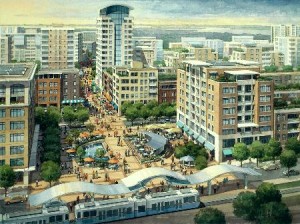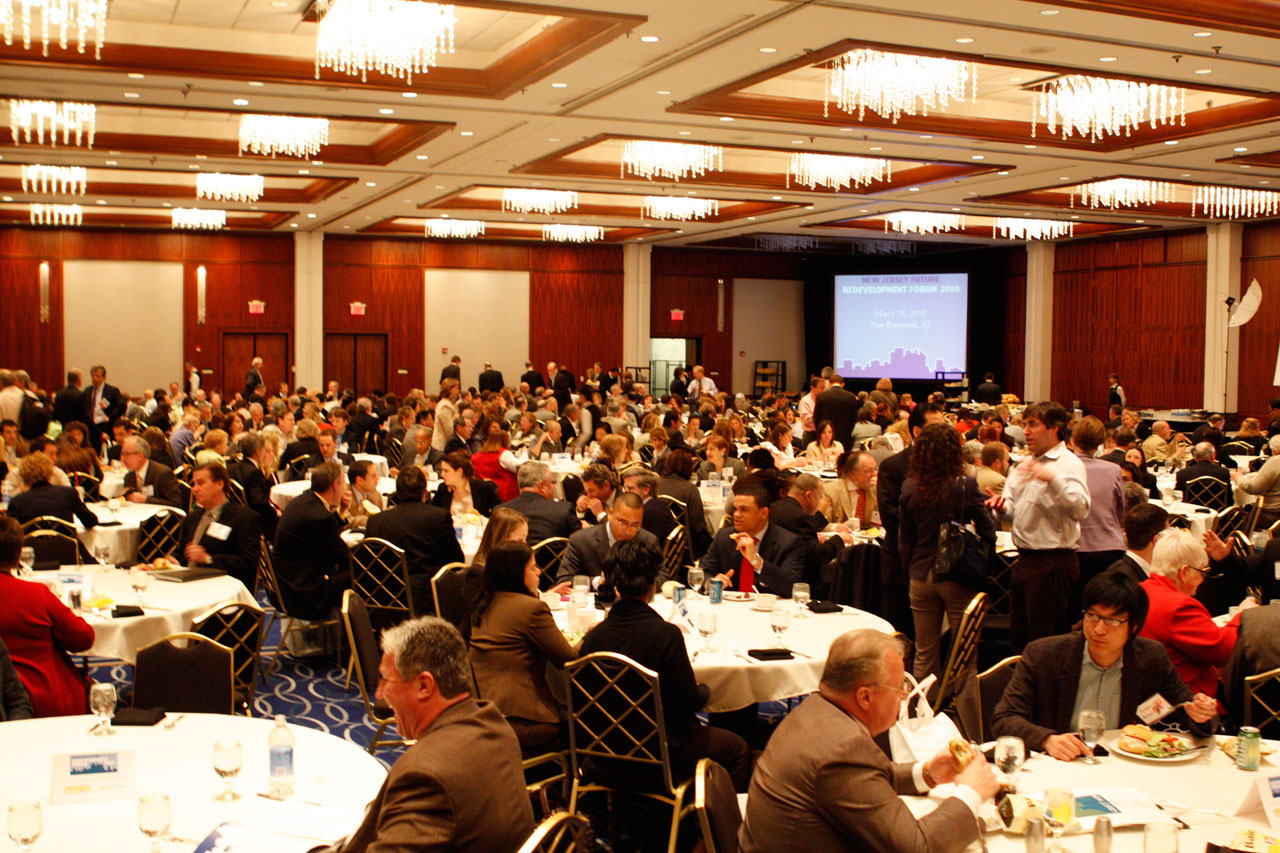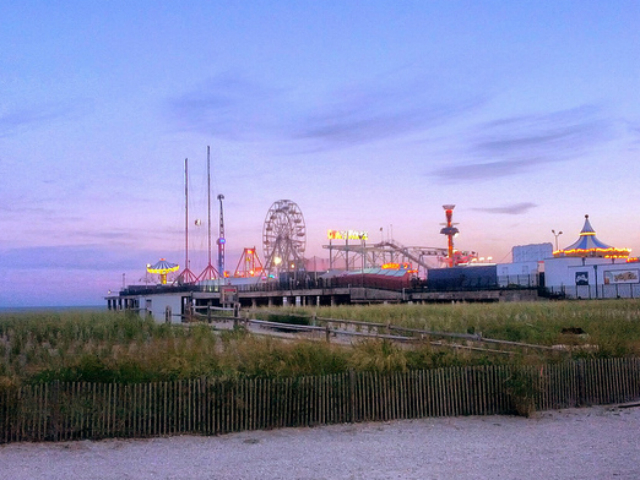New Jersey Future Blog
New Jersey Isn’t Capitalizing on Demand for Walkable Places
March 5th, 2012 by Elaine Clisham
This article is written by nationally renowned urbanist Chris Leinberger, president of LOCUS; Responsible Real Estate Developers and Investors and visiting fellow at the Brookings Institution. Mr. Leinberger will deliver the luncheon keynote at New Jersey Future’s annual Redevelopment Forum on March 9.
- A 2008 survey found that 77 percent of Millennials – the generation of 20-somethings – want to live where they are “close to each other, to services, to places to meet, and to work, and they would rather walk than drive.”
- New Jersey, with its extensive rail transit network and “streetcar suburbs” with pedestrian-friendly downtowns that surround many of their stations, is well poised to take advantage of the rise in demand for this walkable urbanism.
The New Divide: Walkable vs. Drivable
New Jersey is an anomaly among the 50 states in that it is highly urbanized yet lacks a major center city to claim as its own. The state’s home-grown urban centers all live in the shadows of their much larger neighbors, New York and Philadelphia. In fact, New Jersey is widely perceived as consisting mainly of suburbs serving these two cities, even if many of its small towns do not fit the low-density, single-use stereotype of a “suburb.” The distinction, however, between city and suburb as the defining paradigm for describing the built environment is giving way to a new dichotomy: walkable urbanism versus drivable sub-urbanism. New Jersey is well positioned to take advantage of this change.
Today, too many walkable urban projects are derailed by lack of zoning, lengthy approval processes and local resident opposition. The majority of those who oppose such projects are often the very residents who will benefit the most from increased walkable urbanism, and at no cost to themselves.
The pent-up demand for walkable urbanism today is the result of a number of factors, but is broadly a story of demographics. Millennials, and their parents in the Baby Boom generation, make up more than half of the country’s population and both are in transition. Baby Boomers are now empty-nesters and will soon become retirees, and are likely to downsize their housing as they age. Studies show that Millennials – those just graduating from college and starting out in life – greatly prefer the characteristics of urban living, including proximity to friends and events, nightlife, and not needing a car, to those of the drivable suburbs where many of them grew up. Millennials are delaying marriage and family, something that, when paired with the empty-nester Baby Boomers, is creating a boom of childless households. Singles and childless couples are the emerging household type of the future, a trend that is already having a profound effect on the built environment and will continue to do so for decades to come.
Arlington County, Va.: A Success Story
To see the rise of walkable urbanism in action, one need look no further than down the Northeast Corridor to the Washington, D.C. metro region. Thirty years ago, when the region’s Metro system was in its infancy, Washington’s suburbs looked like the suburbs of any other car-oriented metro area. But since then, places like Silver Spring and Bethesda, Md., and the Carlyle and Reston town centers in Virginia, have transformed from auto-oriented suburbs into walkable communities, mixing shops, restaurants, services and a variety of housing types within walking distance of each other. In addition to functioning as local centers, nearly all of these places are anchored by rail transit, offering access to jobs, culture and entertainment in the larger hub of Washington.
Perhaps the most remarkable transition has been in the Ballston-Rosslyn corridor in Arlington County, an inner suburban county with a population of 208,000. There, thanks to a conscious policy of concentrated growth around Metrorail stations, what was once a fading, auto-oriented suburb has boomed to a point where the walkable urban parts of the county, representing 10 percent of the county’s land, now account for more than 50 percent of the county’s tax revenue. Moreover, the influx of singles and childless couples, who pay school taxes but have few children, have contributed to making Arlington’s public schools among the best in the country. And surprisingly, while residential densities have doubled along the corridor since 1985, absolute traffic counts have actually gone down, as more people are able to get around by transit, biking and, most importantly, walking.
Those living in existing single-family housing within walking distance of these new urbanized places in Arlington have also seen their quality of life improve, as evidenced by the premiums, often 80 percent to 100 percent, in the values of their homes over single-family housing in Arlington that is not within walking distance of urban amenities. These residents have access to both the suburban environment they desire and walking convenience to great urbanism … the best of both worlds.
Like Arlington, New Jersey has the right mix of assets to benefit from the pent-up demand for walkable urbanism, including an extensive transit system and proximity to a major city – in fact, two major cities. But unlike Arlington, most New Jersey municipalities have not capitalized on the potential benefits of these trends by providing a supportive development climate around rail transit stations. Today, too many walkable urban projects are derailed by lack of zoning, lengthy approval processes and local resident opposition. The majority of those who oppose such projects are often the very residents who will benefit the most from increased walkable urbanism, and at no cost to themselves. There are people all across New Jersey who want to live in or close to walkable urban places, and plenty of developers who want to create them. Now it’s up to the planners, neighbors, regulators, policy makers and others to let them do it.


















Our older towns are also inherently and superbly bikable and have the potential to be first rate bike towns. Unfortunately very few are doing anything to promote cycling.
Hats off to West Windsor for being NJ’s first and only Bicycle Friendly Community but its inexcusable for NJ to have only one BFC and for Mississippi to have two!
Yep! Millennials are connected. We want to be near each other. Fascinating article.
I recently moved to NJ from DC. I had been living a car-free life in DC, mainly because the transit is not well integrated. I found it impossible to recreate my car-free life here in NJ, but I still wanted to live in a city/town so I could walk to local businesses. It was very difficult to find anywhere that fit the bill. In the end I moved to Princeton, but the prices here are certainly prohibitive. I hope more smart growth can be integrated into NJ planning in the near future to bring together walkability and affordability.